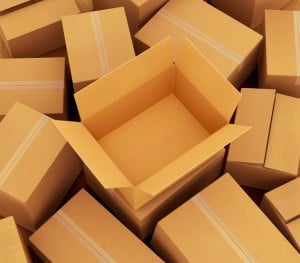Moving to a new place?
If you don’t want to spend your first night without power, water or Internet you need to move more than your furniture and clothing.
Make a plan for setting up utilities so everything is active when you arrive.
Here are tips to help you with a smooth move.
1. Plan Ahead
The time for setting up utilities is when you finalize your new apartment or home.
Give yourself a month to contact providers. Ask how much notice is required to stop or start service.
Here are common utilities:
- Water/Sewer
- Electric
- Gas
- Cable or Satellite TV
- Internet
- Security or Alarm System
If you’re moving across town, transfer current accounts to the new location.
Moving across the state or country means new accounts. That can involve deposits and credit checks.
Is your new residence ready for your services? You may need to schedule an installation if you add a gas line or home security system.
2. Research and Referrals
Are you familiar with local providers? Ask the landlord, realtor, previous tenants, and neighbors for recommendations on service, rates, and deals.
Read reviews on Google, Yelp, and social media to determine customer satisfaction.
Visit utility websites to get quotes. Comparison shop so you can ask the provider to match a competitor’s price.
3. Setting Up Utilities
Once you choose your providers, sign up online, over the phone or in person at a business office.
Utilities like water or electricity don’t require your presence. Others, like Internet service, can only be set up when you’re home.
If you’re moving into a house, it’s easier to use providers that already serve the home.
Changes to existing services, like switching from DSL to fiber optic, will take more time and cost more.
4. Pay Attention to Details
Make a list of questions for each utility. When you call take detailed notes.
Note the price you’re quoted and the name of the person who handled your order.
Ask about charges for installation or equipment. This information will help if you have discrepancies on your first bill.
Confirm if you must be present for installation. Some companies charge for simple things you can do yourself. If you know how to set up a wireless router, do it.
Forward your mail and provide your new address to your previous providers. You don’t want to miss your last bill or refunds.
5. Cost-Savings
Here are money-saving tips for setting up utilities.
Ask for a Discount
If you’re a student, a senior or a veteran, ask for a discount. Some companies offer new resident and first-time customer discounts.
Call in the Morning
You’ll receive better customer service if you call at 9 A.M. Associates are fresh and in a better mood to offer discounts.
Renegotiate
Your bill may increase at the end of your first year. This is usually true with a promotional offer.
Call a month before the contract ends to renegotiate service.
It’s Time to Move It, Move It
Setting up utilities in your new home is faster and easier when you follow these tips.
Are you looking for a moving company to take the rest of the stress out of moving? Contact Browning Moving Company for a quote.


 pushing it back down on you. This is counter-intuitive to a ceiling fan’s purpose for Florida residents.
pushing it back down on you. This is counter-intuitive to a ceiling fan’s purpose for Florida residents. Packing can be a hassle for many reasons. One of the challenges you’re bound to face is deciding how to pack your smaller items. They can easily become misplaced at the bottom of boxes or even get left behind in your old home. Luckily, we have a few easy tips on how to avoid this. Read on below to guarantee your favorite necklace or television remote doesn’t get lost in the moving shuffle.
Packing can be a hassle for many reasons. One of the challenges you’re bound to face is deciding how to pack your smaller items. They can easily become misplaced at the bottom of boxes or even get left behind in your old home. Luckily, we have a few easy tips on how to avoid this. Read on below to guarantee your favorite necklace or television remote doesn’t get lost in the moving shuffle.